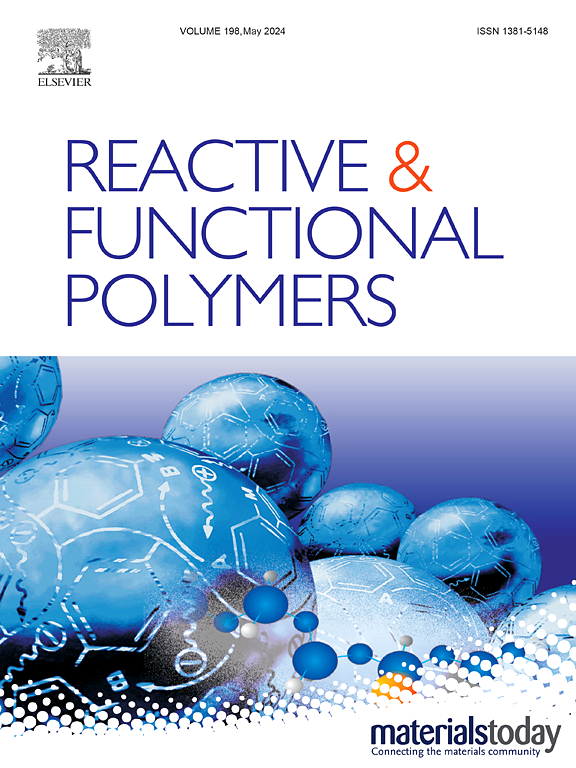不同π桥单元对咔唑基聚合物光学和电学性能影响的研究
IF 4.5
3区 工程技术
Q1 CHEMISTRY, APPLIED
引用次数: 0
摘要
科学技术的最新进展增加了人们对新材料合成及其潜在应用的兴趣。分子结构中桥单元的选择对于获得具有理想性能的共轭材料起着至关重要的作用。本工作的主要亮点是研究了两种不同的π桥对咔唑基化合物的结构、光学、电学和电子性能的影响。本文设计合成了以咔唑为D单元,乙二醛或对苯二醛为π共轭连接剂的两种结构上具有给体-π共轭连接体-给体(D-π-D)结构的单体。采用NMR、FT-IR、UV-Vis、荧光、质谱等不同的光谱技术和元素分析,成功表征了(1E,2E)- n1, n2 -二(9-乙基- 9h -咔唑-3-基)乙烷-1,2-二亚胺(即Cz-Gly)和1,1′-(1,4-苯基)二(N-(9-乙基- 9h -咔唑-3-基)甲亚胺(即Cz-Tpa)的结构性质。采用Beck3-Lee-Yang-Parr (B3LYP)杂化泛函水平和6-31G(d,p)基集,利用密度泛函理论(DFT)研究了不同π桥单体的结构-性能关系。采用电聚合的方法在氧化铟锡(ITO)衬底上合成了pCz-Gly和pCz-Tpa聚合物薄膜。详细研究了不同桥单元对聚合物电化学、光学和形态性能的影响。具有刚性和共轭桥单元的pCz-Tpa比pCz-Gly具有更高的光学对比度和显色效率,更快的开关时间和更好的电化学稳定性。此外,pCz-Tpa聚合物薄膜也呈现出明显的颜色变化,从透明的中性形态到浅粉色、橙棕色、浅绿色和绿色氧化形态。这些优异的性能使所制备的pCz-Tpa聚合物薄膜成为下一代应用的潜在候选者,如电致变色器件、超级电容器、光伏电池等。本研究为选择合适的给体和π桥单元获得高性能材料提供了一种有效的策略。本文章由计算机程序翻译,如有差异,请以英文原文为准。

Investigation of the effect of different π-bridge units on the optical and electrical properties of carbazole-based polymers
Recent advances in science and technology have increased interest in the synthesis of new materials and their potential applications. The choice of bridge units in molecular architecture plays a crucial role in obtaining conjugated materials with desired properties. The main highlight of this work is to study of the effect of two different π-bridges on the structural, optical, electrical, and electronic properties of carbazole-based compounds. Herein, two monomers with structurally donor-π-conjugated linker-donor (D-π-D) architecture containing carbazole as the D unit and glyoxal or terephthalaldehyde as π-conjugated linkers were designed and synthesized.The structural properties of (1E,2E)-N1,N2-bis(9-ethyl-9H-carbazol-3-yl)ethane-1,2-diimine (namely Cz-Gly) and 1,1′-(1,4-phenylene)bis(N-(9-ethyl-9H-carbazol-3-yl)methanimine) (namely Cz-Tpa) were successfully characterized by different spectroscopic techniques (NMR, FT–IR, UV–Vis, fluorescence, and mass) and elemental analysis. Also, the structure-property relationships of monomers with different π-bridges were investigated by density functional theory (DFT) with the Beck3-Lee-Yang-Parr (B3LYP) hybrid functional level and 6-31G(d,p) basis set. The pCz-Gly and pCz-Tpa polymer thin films were synthesized using electropolymerization on indium‑tin-oxide (ITO) substrates. The role of different bridge units on the electrochemical, optical, and morphological properties of the polymers was investigated in detail. The pCz-Tpa with the rigid and conjugated bridge unit exhibited higher optical contrast and coloration efficiency, faster switching time, and better electrochemical stability than pCz-Gly. Furthermore, the pCz-Tpa polymer film also revealed distinct color changes from a transparent at neutral state to light pink, orangey brown, light green, and green oxidized forms. These superior properties make the prepared pCz-Tpa polymer film a potential candidate for next-generation applications such as electrochromic devices, supercapacitors, photovoltaic cells, etc. The present work provides an effective strategy to obtain high-performance materials by selecting the appropriate donor and π-bridge units.
求助全文
通过发布文献求助,成功后即可免费获取论文全文。
去求助
来源期刊

Reactive & Functional Polymers
工程技术-高分子科学
CiteScore
8.90
自引率
5.90%
发文量
259
审稿时长
27 days
期刊介绍:
Reactive & Functional Polymers provides a forum to disseminate original ideas, concepts and developments in the science and technology of polymers with functional groups, which impart specific chemical reactivity or physical, chemical, structural, biological, and pharmacological functionality. The scope covers organic polymers, acting for instance as reagents, catalysts, templates, ion-exchangers, selective sorbents, chelating or antimicrobial agents, drug carriers, sensors, membranes, and hydrogels. This also includes reactive cross-linkable prepolymers and high-performance thermosetting polymers, natural or degradable polymers, conducting polymers, and porous polymers.
Original research articles must contain thorough molecular and material characterization data on synthesis of the above polymers in combination with their applications. Applications include but are not limited to catalysis, water or effluent treatment, separations and recovery, electronics and information storage, energy conversion, encapsulation, or adhesion.
 求助内容:
求助内容: 应助结果提醒方式:
应助结果提醒方式:


